Medical School History
Landmark Events & Celebrated Milestones
Pivotal Moments and Notable Figures that Shaped the Medical School
Defining moments in a medical school’s timeline reveal its mission, innovations, and impact on healthcare. From our founding, rooted in a commitment to addressing unmet medical needs, to pioneering research breakthroughs and curriculum advancements, each milestone shapes our identity and legacy. The medical school’s first graduating class, the addition of specialized training programs, and the development of cutting-edge technology all mark the transformative stages in our growth. These defining moments not only reflect the medical school’s journey, but also highlight our enduring influence in preparing skilled, compassionate healthcare professionals to meet the challenges of tomorrow.
As we celebrate 70 years of excellence, we invited members of our community to share their personal stories about what the medical school means to them and what continues to inspire them today. Don't miss this powerful video that highlights the impact and legacy of our medical school - watch and be inspired by these incredible journeys.
1947 The Medical School’s First Dean
Stafford L. Warren, M.D., appointed first dean of the medical school. A former colonel in the United States Army Medical Corps and chief of the Manhattan Project’s medical section and a radiologist by training, Dr. Warren is credited with the discovery of a breast imaging technique that led to the invention of the mammogram.


1950's Willed-Body Program
The medical school establishes the first willed-body program in the world, allowing people to leave their bodies to science upon dying for research purposes.
1951 The Medical School’s First Students
Classes begin on Sept. 20 for the medical school’s first students—two women and 26 men—taught by 15 faculty members. Four-year attendance cost $10,000. Since it took several years to build the new school, scientists conduct research in wartime Quonset huts scattered across campus.
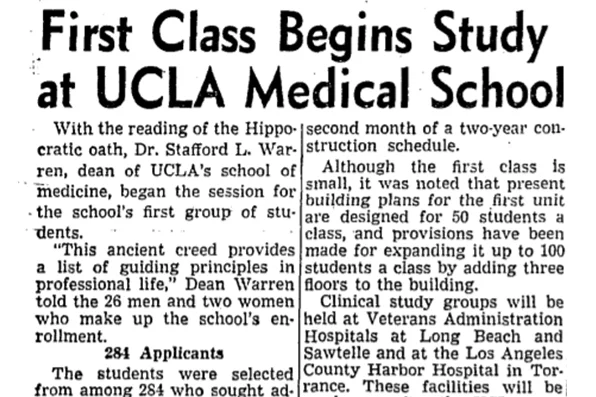

1953 LGBTQ Rights
Psychology professor and research associate Evelyn Hooker, Ph.D., conducts groundbreaking research debunking the belief that homosexuality is a mental illness.
1955 A Medical School of the Atomic Age
The Medical Center opens to patients and is heralded as the first hospital of the Atomic Age—marking the first use of the atomic smasher for medical purposes.


1961 Computerized Tomography
William Oldendorf, M.D., establishes bedrock for non-invasive imaging technologies: computer-assisted tomography (CAT) scan and magnetic resonance imaging (MRI).
1964 Tissue Matching
Paul Terasaki ’50, M.S. ’52, Ph.D. ’56, who spent three years with his family in a Japanese-American internment camp before becoming a three-time graduate, develops the tissue-matching test that makes organ transplants possible. The test is now the international standard for tissue typing.


1971 The Art of Learning Medicine
Artist May Lesser, M.F.A., embedded with the Class of 1971, completes her four-year medical school journey and later publishes The Art of Learning Medicine based on her experience. The book uses her impressive body of artwork—including drawings and color etchings—as well as her commentary to chronicle the human side of medical education.
1975 Leading the Way
Gail Wyatt, Ph.D. ’73, becomes the first Black woman licensed as a psychologist in the state of California. She is the first Black female full professor in the School of Medicine and the first person of color to receive a coveted K—or Research Scientist Career Development—Award from the NIH

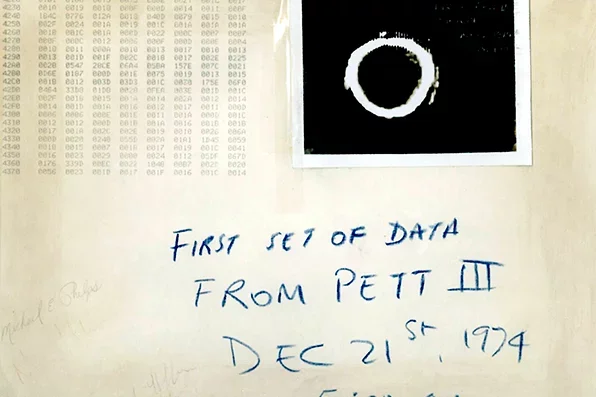
1978 Molecular Imaging
Michael Phelps, Ph.D., and Edward Hoffman, Ph.D., in the medical school, create the first clinical positron emission tomography (PET) center.
1978 Connecting Westwood to South LA
The Charles R. Drew University of Medicine and Science in south Los Angeles and the School of Medicine establish the Charles R. Drew/Medical Education Program to train health care leaders who will advance humanistic health in underserved communities.


1978 Community Partnership
The medical school forms a formal affiliation with Venice Family Clinic, which will become the nation’s largest free medical clinic. Today, with the help of medical faculty, resident and students, the clinic serves more than 27,000 low-income and homeless LA residents annually.
1980 Trailblazer in Surgery
Marjorie Fine, M.D. ’75, R.E.S. ’80, becomes the first woman to complete the general surgery residency at the medical school. Dr. Fine went on to become one of the first female surgeons at Saint John’s Hospital and Health Center. During the past decade she has worked overseas in third world countries leading and participating in surgical missionary work.


1981 AIDS Research
Medical school physicians report and describe the first cases of AIDS, a discovery that will lead to the formation of the UCLA AIDS Institute and the school’s standing as a world leader in AIDS research.
1983 Launch of Physician-Scientist Track
Funded by the NIH, the Medical Scientist Training Program opens its doors to those pursuing a joint M.D.-Ph.D. degree. In 1997, the program formed an affiliation with Caltech to further expand opportunities for innovative research and training.
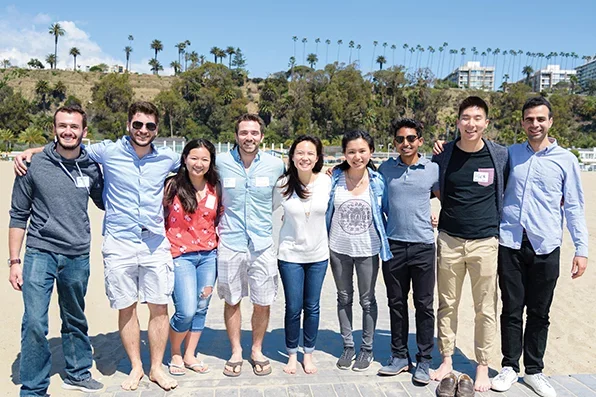

1983 Landmark Leukemia Drug
Owen Witte, M.D., pinpoints a genetic target crucial to the development of life-saving drugs.
1984 New Heights
Anna Lee Fisher ’71, M.D. ’76, M.S.’87, a chemist, physician, and NASA astronaut, becomes the first mother in space when she embarks on mission STS-51A aboard the space shuttle Discovery.


1984 Pioneers in Heart Transplantation
Hillel Laks, M.D., the first U.S. cardiac surgeon to perform bypass surgery on a donor heart prior to transplantation, founds the medical school Heart Transplant Program.
1984 First on the West Coast
Helmed by Ronald Busuttil, M.D., Ph.D., UCLA opens the first liver transplant program west of the Mississippi. One of the first such programs in the nation, it is now one of the world’s largest transplantation programs.


1988 Genetic Basis of Disease
Michael Grunstein, Ph.D., demonstrates that histones influence gene expression and disease development.
1988 New Visions
Patricia Bath, M.D., invents Laserphaco, a device and technique that begins the laser era of cataract surgery. She is the first Black woman to receive a medical patent, the first woman to serve on the Stein Eye Institute faculty, the first Black female surgical faculty at the medical school, and the first female chair of an ophthalmology residency program at a U.S. medical institution.

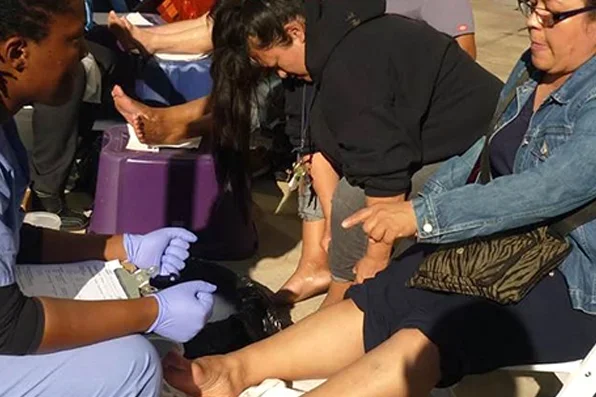
1990 Student-led Street Medicine
Students join the Department of Family Medicine to create the Student Run Homeless Clinic, which provides free medical care and services to the unhoused at pop-up sites across Los Angeles.
1990 Brain Aneurysm Treatment
Guido Guglielmi, M.D., invents detachable coils that stop deadly bleeding from brain aneurysms.


1992 Innovations in Teaching
The medical school launches “Doctoring” curriculum, which takes a new, patient-centered approach to medical education. Students are introduced to a wide variety of communication skills and psychosocial factors (including substance abuse, domestic violence, and mental health) that play an important role in patient encounters. The program serves as a model for dozens of other medical schools in the U.S. and around the world.
1993 Revolutionizing Residency Training
The medical school launches the Specialty Training and Advanced Research (STAR) Program, allowing residents and fellows to pursue a Ph.D. at UCLA, Caltech, or the RAND Corporation simultaneously with their clinical specialty training. Learn more.

1994 Metabolic Genetic Origin
Elizabeth Neufeld, Ph.D., receives the National Medal of Science for research critical to treating metabolic disorders.
1998 Precision Cancer Treatment
Dennis Slamon, M.D., Ph.D., identifies the HER2/neu oncogene, which leads to the development of the breast cancer drug trastuzumab (Herceptin), that has saved millions of women’s lives by targeting a specific genetic alteration.


1998 Molecular Signaling
Louis Ignarro, Ph.D., receives the Nobel Prize in Physiology or Medicine for demonstrating the signaling properties of nitric oxide.
2002 A Transformational Gift
Entertainment executive and philanthropist David Geffen donates $200 million, the largest single gift to a school of medicine in U.S. history. The gift helps to propel the medical school to its status as a world-class institution for education and research. The medical school is renamed to the David Geffen School of Medicine in his honor.


2004 Prostate Cancer Treatment
Charles Sawyer, M.D., and Michael Jung, Ph.D., develop a drug to fight castration-resistant prostate cancer.
2008 Championing Future Healthcare Leaders
The medical school joins Programs in Medical Education (PRIME), a UC-wide initiative, and launches a five-year program to earn an M.D. and a master’s degree. PRIME develops leaders in medicine addressing policy, care, and research in health care for the underserved.


2008 The Future of Medicine, Now Open
Ronald Reagan Medical Center, designed by I.M. Pei, opens its doors on June 29, replacing the 1950s Center for Health Sciences (CHS) that was structurally weakened by the 1994 Northridge earthquake.
2010 Academic Leadership
A. Eugene Washington, M.D., M.P.H., M.Sc., an internationally-renowned clinical investigator and health policy scholar, becomes the first Black dean of the David Geffen School of Medicine at UCLA.


2012 Game-Changing Scholarship
David Geffen gives $100 million to establish the David Geffen Medical Scholarships, enabling approximately 25% of medical school students to graduate debt-free.
2015 Successful Gene Therapy
Donald B. Kohn, M.D., cures “Bubble Baby” disease using gene therapy.
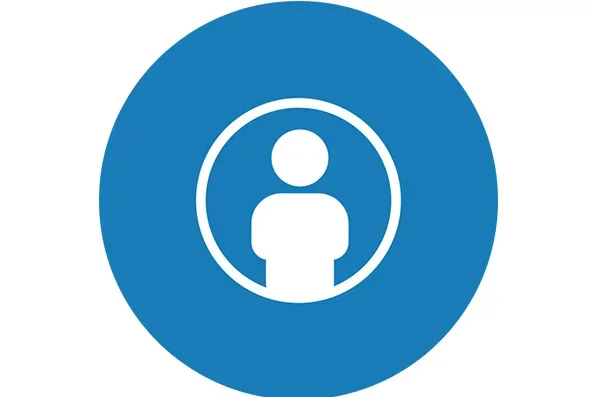

2016 First Woman Dean
Kelsey C. Martin, M.D., Ph.D., becomes the first female dean of the medical school. A neuroscientist who was inspired to pursue medicine by her experience as a Peace Corps volunteer, Dr. Martin is a leader in driving cross-disciplinary activities that bridge clinical medicine with academic scholarship in the basic sciences, social sciences, data sciences, and engineering.
2018 South Tower Move
Thirty-three laboratories and hundreds of biomedical researchers move from historically siloed units into a new, shared space in the CHS South Tower. The medical school’s compact, walkable campus instills a collaborative culture across research labs, the hospital, clinics, and schools of nursing, engineering, and dentistry. View the move.
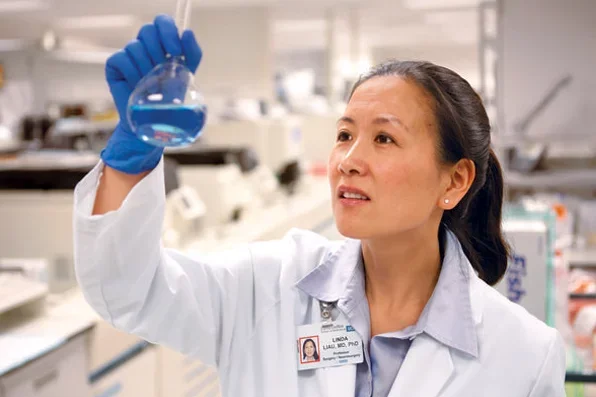
2019 Fighting Brain Tumors
Linda Liau, M.D., Ph.D. ’99, M.B.A. world-renowned brain surgeon and cancer researcher who is pioneering the use of a dendritic cell-based vaccine for glioblastoma, is elected chair of the American Board of Neurological Surgery. She is the first woman to chair the organization in its 80-year history and the first woman to chair the medical schools Department of Neurosurgery.
2019 Upping A Game Changing Scholarship
David Geffen gives an additional $46 million to the David Geffen Medical Scholarships fund, opening the door for an additional 120 medical school students to benefit.


2020 Meeting the Moment
Students assist at COVID-19 testing sites and form the LA COVID Volunteers, a group of 700+ scholars who provide free child care, grocery runs, and PPE to essential workers and their families during the pandemic. They deliver more than 50,000 face shields to UCLA Health and community partners in need.